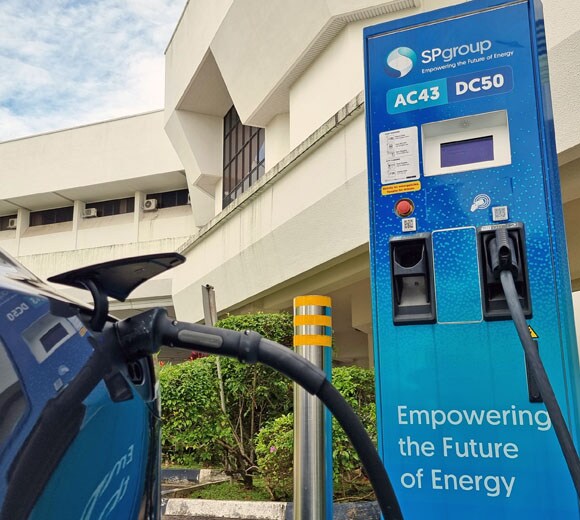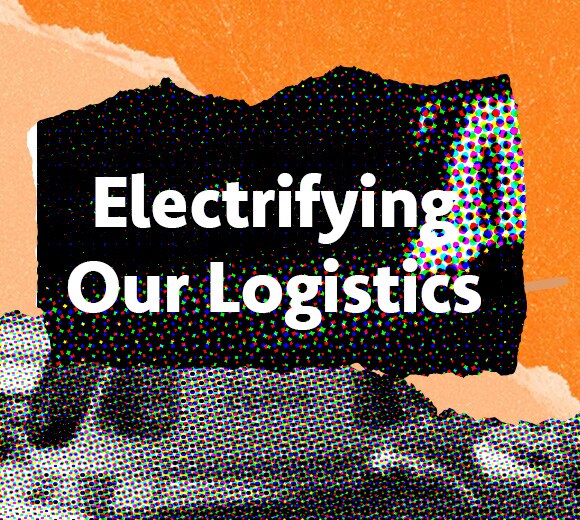Burning Questions: All Roads Lead to Electrification: Decarbonising the Logistics Sector
Burning Questions: All Roads Lead to Electrification: Decarbonising the Logistics Sector
In brief:
● By 2026, e-commerce sales will exceed US$8.1 trillion from US$5.7 trillion last year
● As online purchasing increases, so will CO2 emissions from road freight transport
● Electric vehicles, manned and unmanned, offer a sustainable alternative to diesel-fuelled trucks
The logistics industry is one of the largest contributors to global warming, and as e-commerce grows, so will emissions from road freight transport. Swapping diesel-fuelled trucks for electric-powered EVs and drones can help make doorstep delivery significantly more sustainable.
This year, some 185 billion parcels will be shipped around the world, contributing 8% to global GHG emissions. And with online shopping and doorstep delivery continuing to transform how people shop – and their expectations around convenience, speed and returns – this figure will only grow.
Two novel tech companies are tackling these emissions with electrification: Sweden-based Einride supplies AI-optimised systems that power manned and autonomous electric freight vehicles, and charging infrastructure, and promise a 95% reduction in CO2 emissions. Meanwhile, US-based Zipline’s autonomous drones can make deliveries 10 times as fast as conventional vehicles, but at half the cost and with 97% fewer emissions.
Tan Ser Han, VP, Investment (Innovation) at Temasek, Tomas Ohlson, founding engineer at Einride, and Keller Rinaudo Cliffton, CEO and Co-founder of Zipline, answer your Burning Questions on the future of logistics.
These technologies have the potential to revolutionise the transportation industry and improve efficiency, safety and sustainability. We can fundamentally do more, and achieve more using fewer resources and in shorter timeframes.
Tan Ser Han, VP, Investment (Innovation) at Temasek
Why logistics, and why now?
Ser Han: Logistics are responsible for a significant percentage of carbon emissions globally, and as people consume more, this percentage will increase. Start-ups are driving disruption in this space with innovations and novel tech solutions that have the potential to revolutionise logistics, and not only make it more sustainable, but safer and more efficient.
Keller: I think a transformation in logistics is inevitable. The way we have done delivery over the last ten years has been surprisingly slow and very expensive. Transitioning to a more efficient means of delivering is not only good for the environment, it's a fundamentally better customer experience. I think that's the exciting thing about what the next 5 to 10 years hold.
What does sustainable logistics look like?
v2.jpg)
Aren’t EVs expensive – what makes them cost-effective for freight transport?
Ser Han: Electric vehicles do cost more upfront, but they typically have lower operational and maintenance costs. This dynamic is amplified with higher utilisation – the more they are used, the better the numbers work out to be, which is where autonomy comes in. An electric autonomous vehicle operating 24 hours a day, seven days a week is more efficient on pretty much every metric when compared to most existing solutions. It’s a game changer.
Tomas: High utilisation really is a critical factor. It’s about using every asset in your system efficiently. We use data and AI to coordinate the movement of the entire freight ecosystem. And that's how we get to a sustainable, cost-efficient solution. EVs also live longer, have high reliability, and are cheaper to operate. As the price of electric trucks decreases, it's going to be abundantly clear that the future is electric.
Won’t humans lose their jobs if we use autonomous vehicles?
Tomas: It’s not about removing drivers – it's going to be a manned system when that makes sense, and an autonomous system when that makes sense. That’s where you get the greatest value, with both these technologies working at the same time. Currently, we have far too few drivers for this industry to keep chugging along the way it is.
Keller: As Tomas said, most logistics companies can't hire enough drivers today, so it’s highly unlikely that this technology is going to put drivers out of work. It's a really big – and growing – market. In most of the countries we operate, the existing logistics systems continue doing what they do. We are simply adding another layer that is faster, more efficient, and more sustainable.
So what are we waiting for then? Why isn’t it being implemented?
Ser Han: There are several hurdles. Regulators are understandably cautious about change, consumers must be willing to use the new technology, and companies must be able to fulfil hundreds of thousands of deliveries consistently, and with no mistakes. And then there is the availability of capital – these are large, expensive projects that require time and large amounts of capital.
Keller: From a financing perspective, a lot of investors are wary of infrastructure and hardware. The reality is that there is so much fundamental infrastructure that needs to be built on a global scale and not many investors who operate with that kind of timescale or vision. But I do think they accrue massive value when they get to scale, and I think more and more investors today are realising that. We’ve been lucky that some of these investors have been willing to see the future with us.
So what does the future of logistics look like?
Keller: There was a time when two-day delivery was magical. Then same day delivery became magical. And now, you can get delivery in 2 hours. I think where we're headed is logistics that is so fast and so efficient that you actually can't distinguish it from teleportation. Health care, quick commerce, and food are all going to be significantly transformed over the coming ten years, and toward an experience where anyone, anywhere can get something in 5 to 10 minutes rather than 1 to 2 hours.
Ser Han: These technologies have the potential to revolutionise the transportation industry and improve efficiency, safety and sustainability. We can fundamentally do more, and achieve more using fewer resources and in shorter timeframes.


